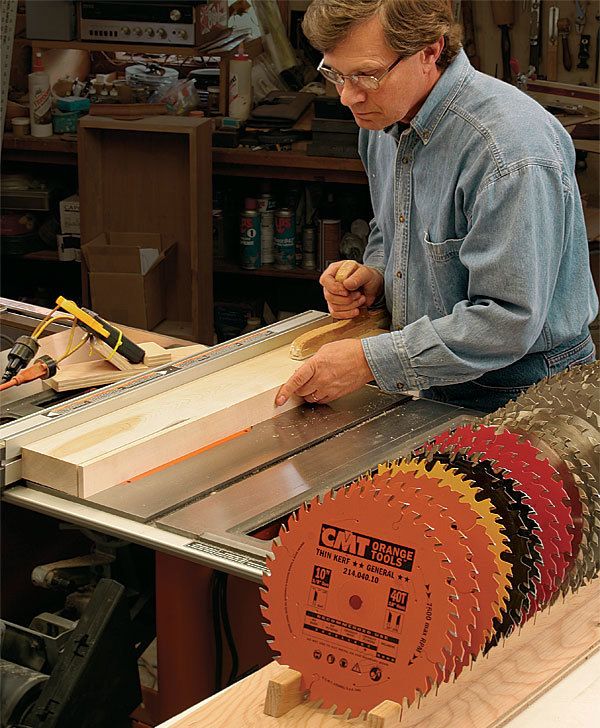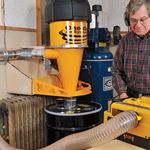Thin-Kerf Blades Are for Everyone
Today's blades make cleaner cuts while saving motor life
Synopsis: Roland Johnson set out to test two widely held beliefs about thin-kerf tablesaw blades: 1) that they make it easier to cut thick stock, and 2) that they are more prone to deflection and vibration, and so make rougher cuts. He tested within brands to see how well a thin-kerf blade cut compared to its standard-kerf sibling, looking at blades from CMT, Freud, Forrest, Irwin, and Oldham. He tested the quality of both ripcuts and crosscuts, both in the center and at the ends of boards, and measured the power required to make each cut. What he discovered may surprise you.
From Fine Woodworking #204
If you have anything short of a full-size cabinet saw, you know your tablesaw can get bogged down, or even stopped cold, when cutting hardwoods much thicker than 1 1⁄2 in. And I’m sure you’ve heard that a thin-kerf blade will make it easier to cut thick stock. The thinner blade cuts less wood and so requires less power. At least that’s the theory. The trade-off, some say, is that thinner blades are more prone to deflection and vibration, and so make a rougher cut, especially on shave cuts on the end of a board.
We decided to test whether thin-kerf blades can handle the rigors of everyday use. I didn’t compare across the brands—this wasn’t a head-to-head test—but within brands to see how well a thin-kerf combination blade did in comparison to its standard-kerf sibling, looking at blades from CMT, Freud, Forrest, Irwin, and Oldham. The blades I chose are widely available and run the price gamut from low to high.
I ran thick lumber past the blades and used an amp meter to read the power needed to make the cuts. But I also looked at how well the thin-kerf blades cut in a variety of situations. Sure, you might be able to rip 8/4 stock on a benchtop saw, but how much burning, chatter, and deflection will you have to live with? I discovered that thin-kerf blades do save power, allowing a small saw to cut big timbers, and saving motor life on tablesaws large and small. But I also found that thin-kerf blades cut just as good an edge as standard-kerf blades.
Putting a tale to the test: To see if thin-kerf blades really save power, I did two ripping tests, one using a power feeder and the other using human power. I checked the quality of cut after the ripcuts, but to really test the cut quality, I made several kinds of crosscuts.
I used three common saws: a contractor’s saw, a high-end portable saw, and a midrange portable saw from a home center. These types of saw are popular because you only need 120 volts to run them and they’re less expensive than a cabinet saw. But their motors aren’t strong enough to rip and crosscut thick hardwoods without slowing the feed rate considerably.
Ripcuts test versatility—For the first ripping test, I powered 4/4, 6/4, 8/4, and 10/4 hardwood past all of the blades, using a power feeder to standardize the feed rate, and a clamp-on amp meter to read how much power each blade was using. I set the speed to approximate a careful hand-feed rate (10 ft. per minute).
For the full article, download the PDF below:
Fine Woodworking Recommended Products


Starrett 12-in. combination square

Freud Super Dado Saw Blade Set 8" x 5/8" Bore























Log in or create an account to post a comment.
Sign up Log in